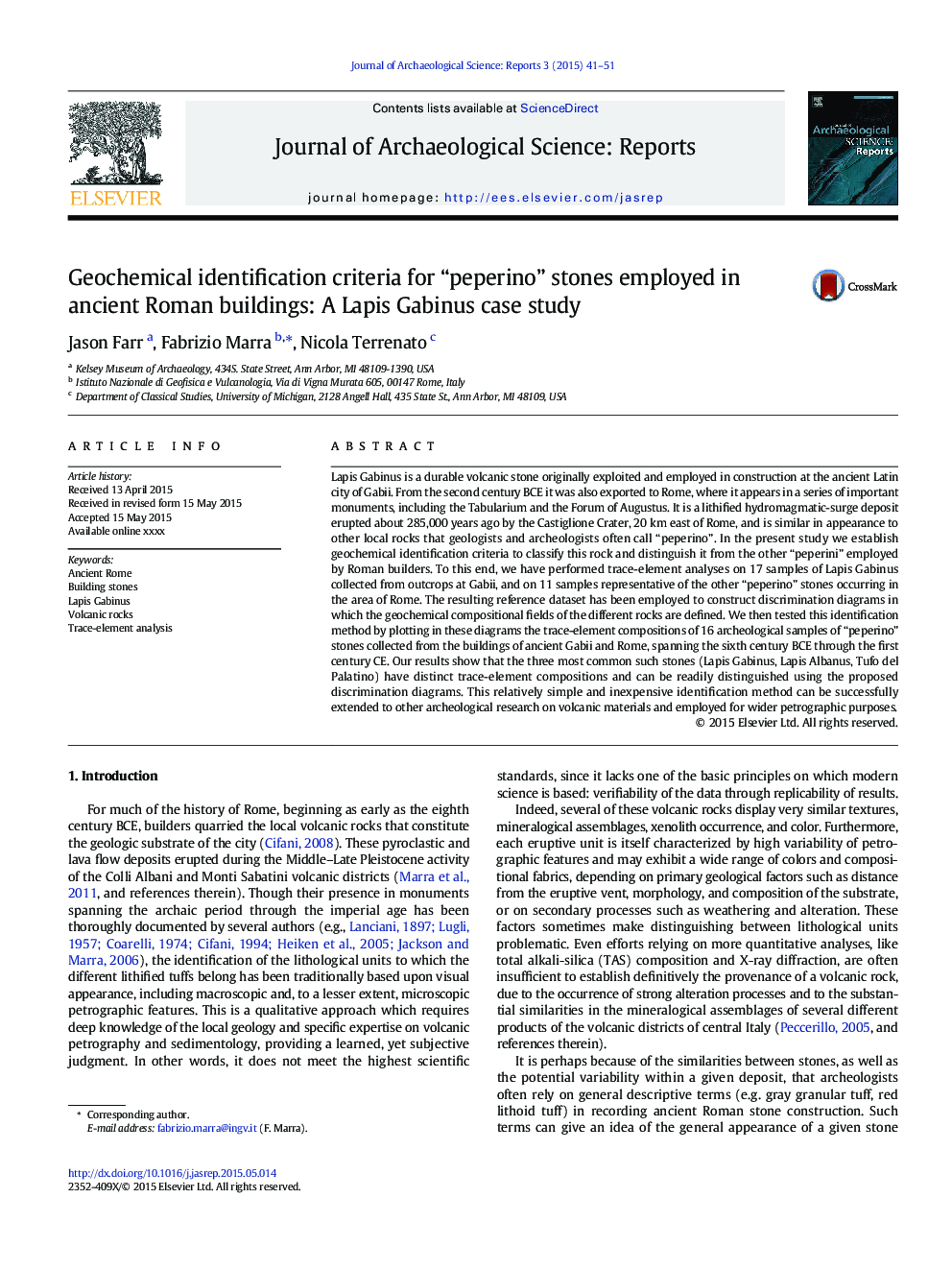| Article ID | Journal | Published Year | Pages | File Type |
|---|---|---|---|---|
| 10499967 | Journal of Archaeological Science: Reports | 2015 | 11 Pages |
Abstract
Lapis Gabinus is a durable volcanic stone originally exploited and employed in construction at the ancient Latin city of Gabii. From the second century BCE it was also exported to Rome, where it appears in a series of important monuments, including the Tabularium and the Forum of Augustus. It is a lithified hydromagmatic-surge deposit erupted about 285,000Â years ago by the Castiglione Crater, 20Â km east of Rome, and is similar in appearance to other local rocks that geologists and archeologists often call “peperino”. In the present study we establish geochemical identification criteria to classify this rock and distinguish it from the other “peperini” employed by Roman builders. To this end, we have performed trace-element analyses on 17 samples of Lapis Gabinus collected from outcrops at Gabii, and on 11 samples representative of the other “peperino” stones occurring in the area of Rome. The resulting reference dataset has been employed to construct discrimination diagrams in which the geochemical compositional fields of the different rocks are defined. We then tested this identification method by plotting in these diagrams the trace-element compositions of 16 archeological samples of “peperino” stones collected from the buildings of ancient Gabii and Rome, spanning the sixth century BCE through the first century CE. Our results show that the three most common such stones (Lapis Gabinus, Lapis Albanus, Tufo del Palatino) have distinct trace-element compositions and can be readily distinguished using the proposed discrimination diagrams. This relatively simple and inexpensive identification method can be successfully extended to other archeological research on volcanic materials and employed for wider petrographic purposes.
Related Topics
Social Sciences and Humanities
Arts and Humanities
History
Authors
Jason Farr, Fabrizio Marra, Nicola Terrenato,
